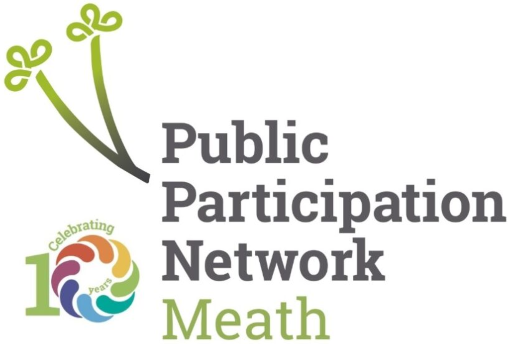All-Ireland Pollinator Plan: June 2024 newsletter
Comments : 0
 Newsletter: June 2024 The All-Ireland Pollinator Plan is a framework bringing together different sectors across the island of Ireland to create a landscape where pollinators can survive and thrive. Its implementation is coordinated by the National Biodiversity Data Centre. |
To spot this month: keep an eye out for the Red-tailed Bumblebee This bumblebee is very common and is often spotted in gardens. The females are entirely black with a red tail. Photograph: Jonathan Derham.  Submit your bumblebee sightings To do this month: Make sure your garden doesn’t have any hunger gaps Try to make sure that your garden has something flowering from March to October for pollinators to feed on. In mine, it’s currently the Clover and Selfheal in the lawn as well as various trees and shrubs (Laburnum, Lavender, Salvia, Catmint). The bumblebees and solitary bees are earning their keep at the minute as they’re also very busy pollinating my raspberries, strawberries, tomatoes and courgettes!  2022 blog: the joy of making your garden pollinator friendly Protecting rare pollinators: new resource on the Shrill Carder Bee The Shrill Carder Bee (Bombus sylvarum) is a rare bumblebee that is in decline across Europe. It is associated with open flower-rich grassland habitats and emerges from hibernation slightly later than other species to coincide with this food source becoming available. Its common name comes from its distinctive high-pitched buzz when flying. Before 1980, the Shrill Carder Bee had a widespread but localised distribution in the southern half of Ireland. It has never been recorded further north than County Roscommon. Currently, populations are known only in the Burren Region, with occasional sightings in nearby areas such as south Galway. Significantly, the Burren now represents the most important location for the species in both Ireland and Britain. We have developed three new resources for anyone who wants to help the Shrill Carder Bee, with everything you need to know about its distribution, lifecycle, and evidence-based actions to help it. Thanks to Dara Stanley and Sharon Parr for helping develop these resources. The beautiful painting is by Shevaun Doherty.  Visit the website to download the resources New illustrated key: can you help find new populations of the hoverfly Voluzella zonaria? The National Biodiversity Data Centre has just published a new illustrated key to hoverfly species in the genus Volucella. This is a technical document, but we hope it might be of interest to some of you. Hoverflies of the genus Volucella spend much of their time on flowers, where they are easy to observe. They are also of reasonable size and brightly coloured, making them noticeable. A new species was added in 2023 (Volucella zonaria, image below), bringing our total number of Volucella species to three. These three species, V. bombylans, V. pellucens and V. zonaria, are not difficult to distinguish from one another. We are very grateful to Dr Martin Speight, who has produced this illustrated key to their identification for the Centre. There are an additional three Volucella species in Europe, and the key includes these, so it should be possible to use the key for identifying Volucella species both in Ireland elsewhere in Europe.  Download the pdf key Pollinator, native plant, and action of the week n June, meadows are in full bloom providing important food sources for pollinators. Look out for native flowers like Clovers, Bird’s-foot-trefoil, Vetches and Selfheal. Every month, we’re sharing ideas on how you can support pollinators with evidence-based actions. We’ll also be celebrating the connection between native plants and pollinators by shining a spotlight on different species. Each week on social media we will release a pollinator of the week, a native plant of the week, and an action of the week. You can also get the monthly summary on our website.  June: pollinator, native plant and action of the week Let it Bloom June We are incredibly grateful to all those who supported No Mow May. It has resulted in lots of new mini meadows emerging across the island. Some people have even reported Orchids popping up in their gardens for the first time! No Mow May is over, but that doesn’t mean you have to start cutting regularly again. Mowing less from April until September is one of the best ways you can help pollinators. So why not keep the buzz going with #LetItBloomJune? Cutting once a month rather than every couple of weeks, and removing the grass clippings when you do mow, can help native wildflowers like red and white clover, Self-heal and Birds-foot-trefoil appear.  Find out more in our short-flowering meadow flyer Pitches for Pollinators Over the summer holidays, schools across the island of Ireland are asked to help the bees by taking part in ‘Pitches for Pollinators’. This annual campaign aims to feed hungry pollinators by leaving school pitches unmown over the summer, allowing wildflowers to emerge. Records submitted to the National Biodiversity Data Centre show that red and white Clover are among the most popular flowers for bees during the summer months. By reducing mowing over the holidays, plants like these can grow in school pitches. During term time, pitches and grassy areas are regularly mown giving children important areas to play. But from the end of June until mid-August, leave pitches unmown to allow wildflowers to grow naturally. Photograph: Juanita Browne.  Find out more Pollinator-friendly Sports Clubs We have been delighted to see more and more sports clubs becoming pollinator-friendly. With approximately 15,000 clubs across the island of Ireland, sports clubs can play a huge role in biodiversity conservation. Introducing pollinator-friendly management across sports clubs would create an entire network of safe places for bees and other insects across the landscape. The positive impact this could have would be enormous. From managing off-pitch grass for pollinators, to biodiversity walking trails, to planting nectar and pollen-rich flowers in club colours, there are loads of ways sports clubs can help pollinators whilst also creating beautiful, healthy environments for clubs users and visitors.  Find out more in our dedicated guideline for the pollinator-friendly management of sports clubs Guest blog: bumblebees and garden flowers We love to hear from people who manage their gardens for pollinators. Sylvia Voss spent years carefully observing the bumblebees that visited her garden in the Knockmealdown Mountains. She put together a slideshow of the species she saw across the seasons, and the plants they visited. In this guest blog, Sylvia tells us about the joy of slowing down and watching nature in her garden.  Blog Can you help by carrying out a FIT Count Flower-Insect Timed Counts (FIT Counts) are an important way that you can help us monitor pollinators. Download the free FIT Count App, watch a 50x50cm patch of flowers for 10 minutes and count how many insects visit. You can carry out a FIT Count anywhere, and on any flower, but where you can, please use one of our 15 target flowers. In June its especially useful to carry out FIT Counts on Red or White Clover. You do need to wait until it’s sunny and at least 13C though! In 2023, 673 validated FIT Counts were submitted by 126 different volunteers. The average number of insects per FIT Count was 9. Why not try one where you are to see how your site compares. For those interested, the National Biodiversity Data Centre also runs a Garden Butterfly Monitoring Scheme, where you can count the number of butterflies visiting your garden.  FIT Count website Garden Butterfly Monitoring Scheme The National Biodiversity Data Centre is a Company Limited by Guarantee. Register Number: 730718. National Biodiversity Data Centre, SETU West Campus, Carriganore, Waterford, Ireland, X91PE03 |

